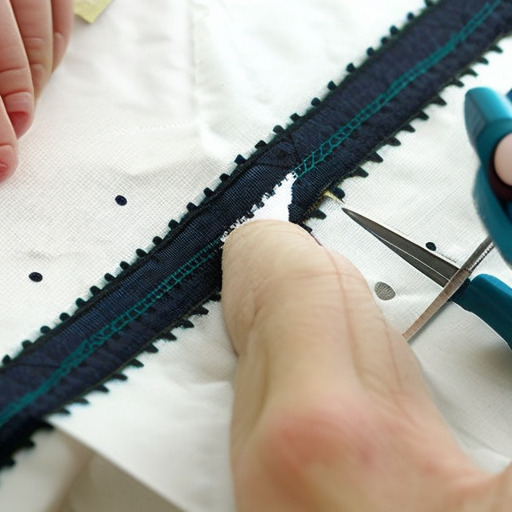Introduction
Stitch cutting is a crucial skill every tailor or seamstress must possess. Whether you are a professional or do it as a hobby, understanding and mastering different stitch cutting techniques can greatly enhance your sewing projects. This article will explore various stitch cutting techniques and provide insights on when and how to use them.
1. Seam Ripping
The seam ripping technique is commonly used to remove unwanted stitches or seams without damaging the fabric. To seam rip effectively:
- Select a sharp seam ripper tool with a small and pointed blade
- Locate the seam or stitches to be removed
- Gently insert the seam ripper blade under a stitch and carefully cut it
- Continue sliding the seam ripper blade along the seam, cutting each stitch as you move
- Avoid applying excessive force to prevent fabric tears or thread breakage
2. Cutting Buttonholes
When it comes to cutting buttonholes, precision is key. Here’s how to execute this technique:
- Using a fabric marker or chalk, mark the buttonhole placement on your fabric
- Select an appropriate buttonhole stitch on your sewing machine
- Set the stitch length and width according to your fabric type and button size
- Position the marked area directly under the needle
- Gently press the foot pedal to create the buttonhole, stopping at each end
- Double-check that the cutting lever or buttonhole cutter on your sewing machine is engaged
- Complete the buttonhole by stitching the opposite end from where you began
- Carefully remove the fabric from the sewing machine, and use sharp scissors to cut the buttonhole open
3. Trimming Excess Fabric
After completing a sewing project, you may need to trim excess fabric for a neat and tidy finish. Follow these steps:
- Pinch the excess fabric securely to prevent any uneven or accidental cuts
- Using a pair of fabric scissors, carefully trim the excess fabric while keeping a consistent distance from the seam line
- Be cautious not to cut into the seam or the desired fabric area
- Regularly check and compare the trimmed portions to ensure they appear balanced and symmetrical
4. Patchwork Stitch Cutting
Patchwork involves the delicate process of cutting various fabric pieces precisely and then sewing them together. Here are the steps:
- Accurately measure and mark the desired dimensions on the fabrics to be cut and joined together
- Use a cutting mat and a rotary cutter to achieve clean and precise cuts
- Handle the rotary cutter safely by applying proper pressure and maintaining a steady cutting motion
- After cutting the pieces, match them according to the patchwork design and sew them together using your preferred stitching technique
- Press the patchwork seams gently to ensure a flat finish
Conclusion
Mastering stitch cutting techniques is not only essential for correcting mistakes but also for achieving professional-looking sewing projects. Whether it’s seam ripping, cutting buttonholes, trimming excess fabric, or working on patchwork, each technique requires focus, patience, and precision. Consistent practice and attention to detail will improve your skills over time, allowing you to elevate your sewing projects to new heights.




